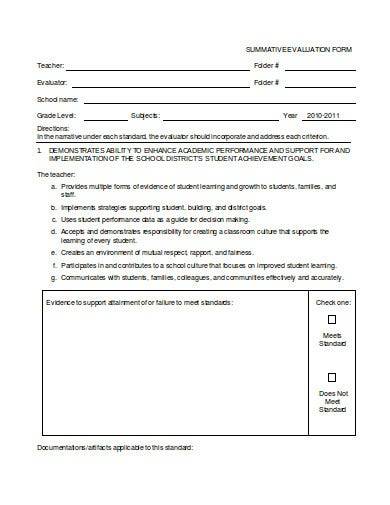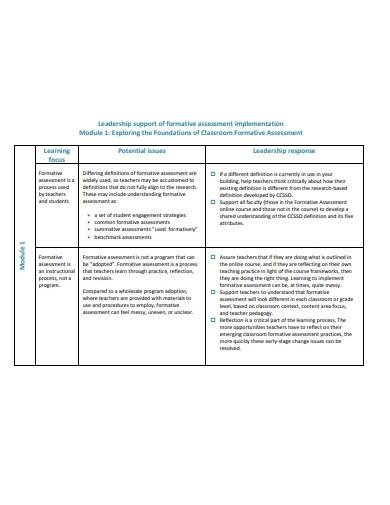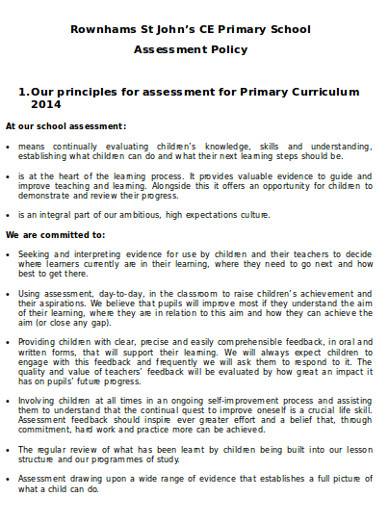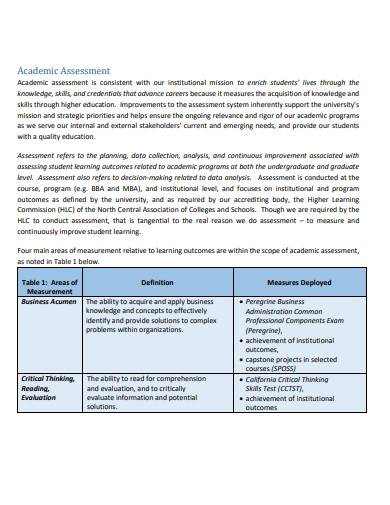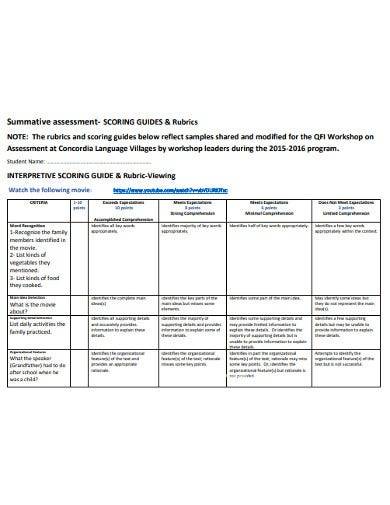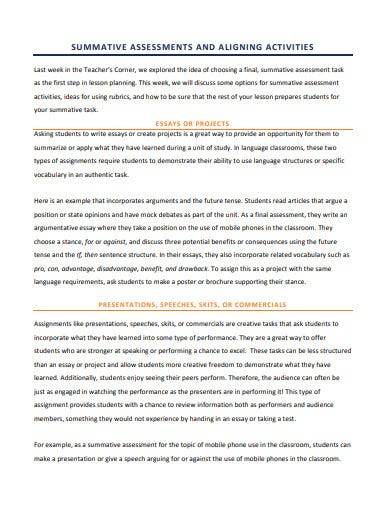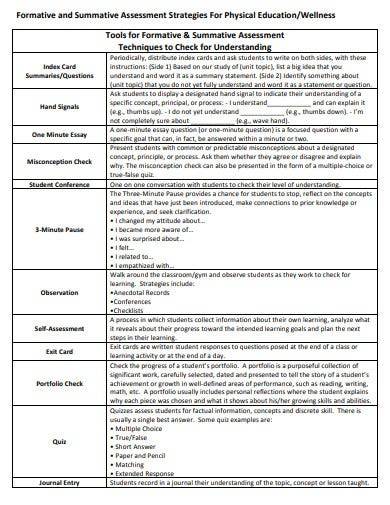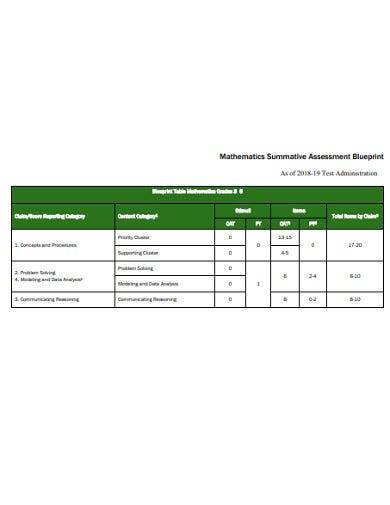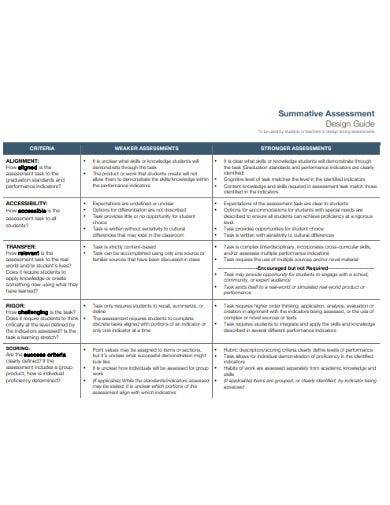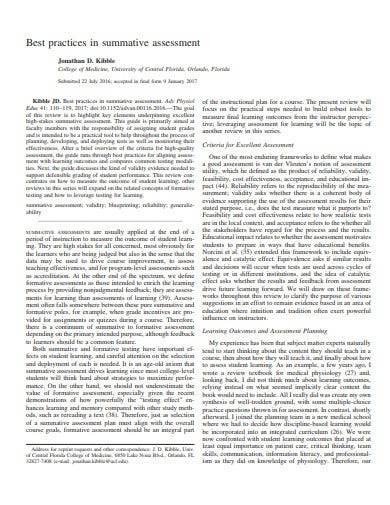Summative assessments can be useful for measuring student achievement and evaluating the effectiveness of teaching improvement and learning needs. However, they can also have some limitations. For example, summative assessments may not capture the full range of student learning or the complexity of the learning process. They may also put too much emphasis on test-taking skills rather than on the depth and breadth of student learning. As a result, summative assessment should be used in conjunction with other forms of evaluation sheet, such as formative assessment, to provide a more complete picture of student learning.
FREE 10+ Summative Assessment Samples
1. Summative Assessment Template
2. Summative Evaluation Assessment
3. Sample Formative Assessment Template
4. Primary School Assessment Policy
5. Academic Assessment Template
6. Sample Rubric Summative Assessment
7. Student Summative Assessment
8. Formative and Summative Assessment
9. Sample Math Summative Assessment
10. Summative Assessment Design Guide
11. Summative Assessment Practice Sample
What Is a Summative Assessment?
Summative assessment is a type of evaluation that occurs at the end of an academic course, unit, project, or academic term. It is typically used to assess the overall student performance or achievement of learners on a specific topic or subject area. Summative assessments often take the form of exams, quizzes, or other standardized tests, and they are designed to measure how well students have learned the material that has been covered in a course or program. Summative assessments are typically used to assess the effectiveness of teaching and learning, and they are often used to determine grades or other forms of academic credit.
How To Make a Summative Assessment?
Summative assessment is often contrasted with formative assessment, which is a type of evaluation that occurs during the learning process. Formative assessment is designed to provide feedback to students and teachers about the learning process, and it is used to help students make progress and improve their performance. To create a summative assessment, you should consider the following steps:
Step 1- Determine the Learning Objectives
Before creating the assessment, you must define the specific knowledge, skills, or competencies you want to evaluate. This will help you design an evaluation that is aligned with the goals and objectives of the course or program.
Step 2- Select the Assessment Format
Many different formats can be used for summative assessment, including exams, quizzes, papers, sample presentations, and projects. Choose the format that best aligns with your learning objectives and the content of the course or program.
Step 3- Develop the Assessment
Once you have determined the assessment format, you can begin to create the assessment questions or tasks. Make sure to include various question types, such as multiple choice, short answer, and narrative essay questions, to assess different kinds of learning.
Step 4- Pilot the Assessment
Before administering the assessment to the entire class or group, piloting the assessment with a small group of students can be helpful. This will allow you to identify any problems or issues with the assessment and make any necessary adjustments. Administer in the evaluation: When you are ready to administer the assessment, provide clear instructions and allocate sufficient time for students to complete the evaluation.
What is the difference between summative and formative assessment?
Summative assessment is a type of evaluation that occurs at the end of a course, unit, project, or academic term. It is used to assess the overall performance or achievement of students on a specific topic or subject area. In contrast, formative assessment is a type of evaluation that occurs during the learning process. It is designed to provide feedback to students and teachers about the learning process, and it is used to help students make progress and improve their performance.
What are some examples of summative assessments?
Examples of summative assessments include exams, quizzes, papers, presentations, and projects. These assessments are typically used to measure how well students have learned the material that has been covered in a course or program.
How do you grade a summative assessment?
To grade a summative assessment, you will need to evaluate the responses using a grading rubric or other evaluation criteria. The rubric should specify the criteria that you will use to evaluate the responses, as well as the weighting of each criterion. You can then use the rubric to determine the overall performance of students on the assessment.
Some advantages of summative assessment include that it can provide a clear and objective measure of student achievement, and it can be used to evaluate the effectiveness of teaching and learning. Some disadvantages of summative assessment include that it may not capture the full range of student learning or the complexity of the learning process, and it may put too much emphasis on test-taking skills rather than on the depth and breadth of student learning.
Related Posts
FREE 5+ Job Self-Assessment Samples in MS Word PDF
FREE 7+ Sample Product Risk Assessment Templates in PDF MS ...
FREE 10+ Physical Assessment Form Samples in MS Word PDF
FREE 9+ Self Assessment Samples in PDF MS Word | Excel
FREE 9+ Psychosocial Assessment Templates in PDF MS Word
FREE 5+ Employee Self-Assessment Samples in MS Word PDF
FREE 9+ Performance Assessments in MS Word PDF
FREE 7+ Sample Student Self Assessment Templates in PDF MS ...
FREE 9+ Functional Behavior Assessment Samples in MS Word PDF
FREE 8+ Sample Mental Health Assessments in MS Word PDF
FREE 8+ Sample Psychosocial Assessment Templates in MS Word ...
FREE 19+ Sample Assessment Templates in PDF MS Word | Excel
FREE 7+ Health Risk Assessments in PDF MS Word
FREE 11+ Assessment Report Format Samples in Google Docs MS ...
FREE 8+ Payroll Administrator Job Description Samples in MS Word ...


